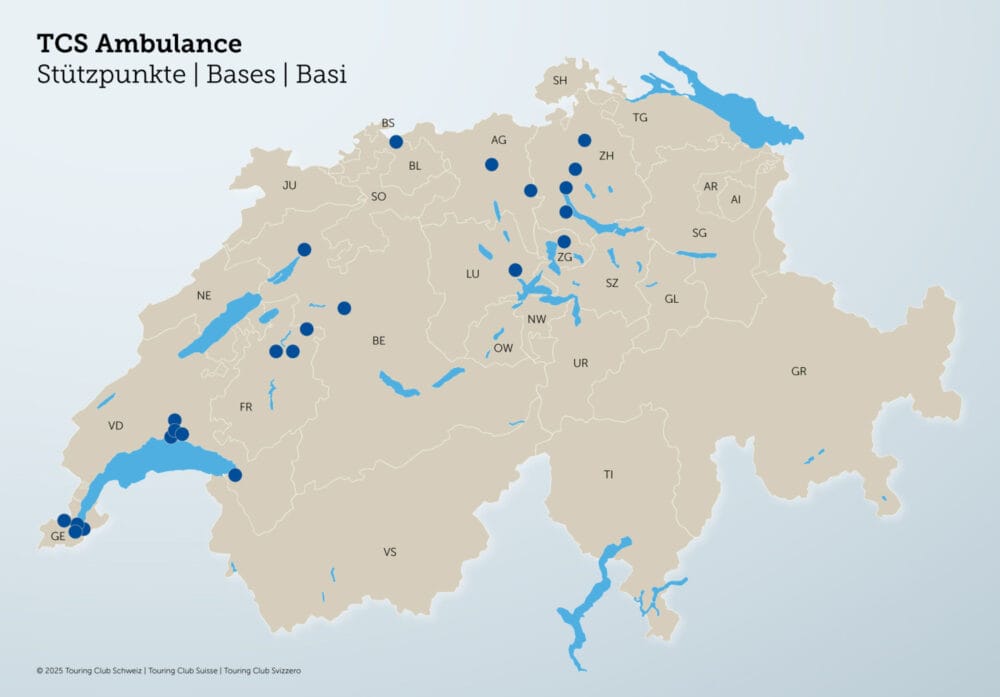Making heatwaves in cities more bearable
Plants and water can alleviate the heat in cities. Using Zurich as an example, Eawag researchers have tested a climate model that indicates the extent of the effect of green and blue areas. The model supports urban planning and shows where improvements would be particularly effective.

Due to climate change, heatwaves are becoming more frequent, which has particularly harmful effects on human health, livelihoods and infrastructure in cities. The change in ground cover from natural to artificial materials such as concrete and asphalt leads to increased energy storage, reduced water evaporation and reduced ventilation. "With our work, we want to contribute to finding solutions to improve the quality of life of urban populations," says João Leitão, professor at ETH Zurich and group leader in Eawag's Urban Water Management department.
Research has shown that one of the best ways to cool urban outdoor spaces is to increase the amount of green space and water. But how much can this really reduce the temperature in a particular location? To answer this question, Australian researchers developed a climate model called TARGET, short for "The Air-temperature Response to Green/blue-infrastructure Evaluation Tool". "We investigated how good TARGET's predictions are and whether such a tool is suitable for urban planning," says Leitão.
Simple, fast model
In contrast to other complex numerical models that require a lot of computing power, TARGET is simple and fast. As input, it requires general meteorological data as well as geographical data indicating what materials the city is covered with, how high the buildings are and how wide the streets are. Based on these data sets, TARGET generates surface and air temperature forecasts for the respective locations. "So it's a spatial model," explains Jixuan Chen, PhD student in Leitão's group and lead author of the TARGET study: "The model shows, for example, that the air temperature is higher in a certain place because there is more concrete there, or that it is cooler in forested areas."
To test how well TARGET's predictions match reality, the researchers chose Zurich as a case study - an area of around 29 km2 that includes the city center along the Limmat and the large, green areas of Käferberg and Zürichberg. The surface and air temperatures were calculated for various locations during a heatwave in the summer of 2023.
The researchers compared the results of the simulation with the temperature values measured directly on site. They relied on data from the Meteoblue weather service, which has a network of over 40 stations in the area under investigation, as well as weather stations operated by private individuals (Netatmo) who take outdoor temperature measurements on a voluntary basis. The result: "The TARGET simulation agrees well with the private weather network data," summarizes Chen: "The model gives the temperatures correctly, so it is a reliable tool for predicting surface and air temperatures in cities."
Air temperature drops by 1.2 degrees Celsius
In a further step, the researchers investigated how areas with different proportions of green-blue areas differ in terms of temperature. "We wanted to know how the surface and air temperature would change if we made our cities greener," explains Leitão. Applying the model to the Zurich case study showed that the air temperature drops by around 1.2 degrees Celsius if the green-blue areas are increased from 0 to 20 % to 60 to 80 %. It becomes a further 4 degrees Celsius cooler if the site is converted into an urban forest. During the summer days studied, it was up to 5.2 degrees Celsius less hot on the Käferberg than in Zurich's city center.
"1.2 degrees Celsius in the city is not much," admits Leitão: "Nevertheless, the conversion is worthwhile. Because additional green-blue areas fulfill other functions or ecological tasks." They can also absorb rainwater better, increase biodiversity and create recreational areas. If you want to counteract the heat even more, you could, for example, create wind corridors that bring the cooler air from the surrounding forests into the city center. "This could probably cool things down by another degree," Leitão estimates: "Even that is not enormous, but all of this can really help to reduce the air temperature."
Where improvements have the greatest impact
The analysis of the study results also shows how much cooling can be expected from the different types of green-blue ground cover at a particular location. Trees, for example, proved to be around twice as effective as irrigated lawns. In order to decide where an intervention would be particularly effective, the researchers also took into account how many people were present in the various areas of Zurich by using data from 20 automatic stations in the city of Zurich that record the number of pedestrians and cyclists every 15 minutes.
"Places with a high volume of pedestrian and bicycle traffic and a low proportion of blue-green traffic should be prioritized," says Chen: "Improvements would be particularly effective there." In Zurich, for example, this would be the Bucheggplatz traffic junction or the particularly busy Langstrasse. In a further study, Chen is now investigating how much the temperature there could be lowered during a heatwave by spraying the streets with water beforehand, as is already done in Japan.
"TARGET can be used to compare different planning scenarios and determine the locations where an intervention is particularly beneficial," concludes Leitão: "The tool is therefore well suited for future urban planning anywhere in the world." TARGET will therefore now become part of a module that is generally accessible in software for geographical information systems (QGIS). The Eawag researchers are working on this together with their colleagues in Australia, Sweden and Belgium. "This software can manage all the input data so that urban planners or landscape architects can easily use the model in the future to improve the quality of life in cities," explains Leitão.
Source: eawag.ch









